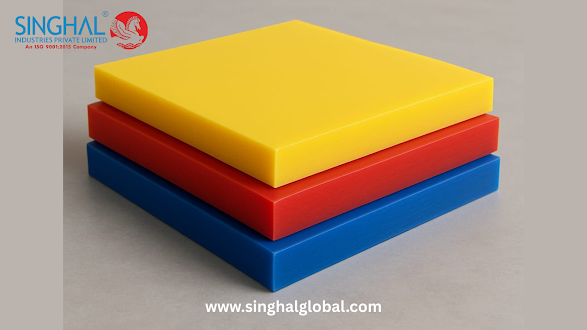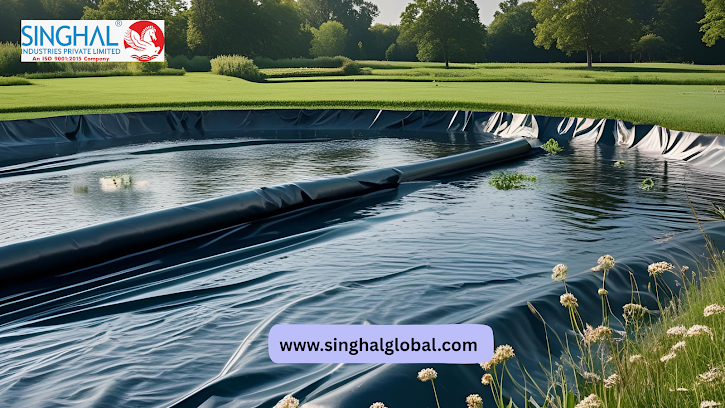Studies on the Flexibility and Endurance of HDPE Sheet Material
HDPE sheet, or HDPE High-Density Polyethylene sheet, is most probably the most widely used thermoplastic across industries due to the fact that it is stronger, chemical-resistant, and cost-efficient. HDPE is also extremely light and resistant to harsh weather and temperature, and it is one of the top dogs for a wide range of applications from industrial packaging to constructions.
This is an essay on the grades, types, and uses of HDPE sheets and their specialty types such as clear HDPE sheets, colored HDPE sheets, and flexible HDPE sheets.
Knowing the Properties of HDPE Sheets
HDPE is a thermoplastic polyethylene derived from petroleum. HDPE is highly strength-to-density, or in other terms, light and strong. The most characteristic aspect of the HDPE sheet material is that it is good at impact resistance, water resistance, and chemical resistance, therefore optimum utilization in an application where harsh weathering is anticipated.
Besides its mechanical strength, HDPE is also a good electrical insulator, and thus ideal for wiring and cabling. The sheets are UV resistant and can be exposed to sun light indefinitely without degrading, and thus are very much sought after outdoors.
Most Outstanding Advantages of Using HDPE Sheets
There are numerous advantages of using HDPE sheets compared to other materials:
1. Good abrasion and impact resistance
2. Acid-, alcohol-, and base-resistant
3. Machineable, fabricable, and weldable
4. Recyclable and environmentally friendly
5. Indoor and outdoor life is long
These properties make HDPE extensively used in applications as different as liners and tanks to signs and cutting boards.
Applications in Different Industries
HDPE sheets have applications in different industries because of its versatility. A few of the applications include:
1. Agriculture: For fencing and tank liners
2. Building: For concrete mold boards, underground utility covers, and weather-resistant coating
3. Packaging: In pallets, crates, and containers
4. Marine: For dock fenders, weather-resistant structures, and boat components
5. Food Processing: For food cutting boards, processing surfaces, and food storage
Each of these uses exploits the primary characteristics of HDPE, including machinability, weather resistance, and lack of reactivity.
Clarity and Performance: Clear HDPE Sheets
Transparent HDPE sheets are specialty form of the otherwise opaque plastic sheet. HDPE as such is not available in a transparent form, but newer technology enables it to be available in semi-transparent sheets where transparency is needed without compromising on strength.
These sheets find widest applications in medical, laboratory, and food use applications where transparency is needed. Clear HDPE sheets also find application in greenhouses, display cabinets, or any other application where chemical resistance as well as light transmission are needed.
Clear HDPE is not as transparent as acrylic or polycarbonate, but wear and tear resistance puts it in the better position where they would not survive in tough environments.
Colour-Coded Durability: Colour Coded HDPE Sheets
Colour coded HDPE sheets introduce a new era of flexibility to this already dynamic material. The sheets are not only aesthetically pleasing—useful for projects such as colour coding for organisation and safety.
Regardless of color, to protect against UV, to warn in red or yellow, blue and green for foods and medicines, colored HDPE sheet provides visible warning and all of the performance advantages of plain HDPE.
They are applied mainly on signs, kids' outdoor playground equipment, boat usage, and cutting boards where color discrimination is required. They are also lightfast and retain appearance even in extended use of sun and chemicals.
Unmatched Pliability: Flexible HDPE Sheet Solutions
While rigid and hard HDPE sheets are so inflexible and stiff that they hardly bend at all, pliable HDPE sheets are softer but never as a compromise on strength and less resistive. Because they are engineered to bend rather than break, they are very well suited to curved forms or sloping surface areas.
Flexible HDPE sheets is also extensively used in pond liners, tank liners, and trench liners where it must follow the contour of a surface. They are also used for insulation, ducting, and packaging material when fold and flex advantages are needed.
Although flexible, sheets still have the chemical resistance, UV resistance, and water resistance of HDPE, hence it is low maintenance and durable.
How HDPE Sheets Stand in Comparison to the Others
In comparison to others like PVC, polycarbonate, or acrylic, HDPE stands better on the grounds of being impact-sensitive and chemically intolerant to smaller extents. With acrylic, it is very clear but much more brittle and prone to cracking.
HDPE also has a lower coefficient of friction and thus can be applied to wear and sliding applications like conveyor parts or wear plates. Its low absorption of water also implies that it will not warp, swell, or rot in wet environments compared to most plastics.
Machining and Fabrication Considerations
One of the most striking features of HDPE sheets is that they are simple to be molded and shaped into any form and size. HDPE is simple to saw, drill, rout, and weld with general tools and equipment.
The CNC machining is also extensively used to produce extremely accurate parts from HDPE sheets. Welding techniques like butt welding and extrusion welding are also extensively used to produce storage tanks, pipes, and safety barriers. The thermoforming process is also achievable using HDPE sheets, which results in curved or bent shapes in rigid and flexible states.
Environmental Impact and Recyclability
HDPE from post-consumer recyclables can be reused to make piping, plastic lumber, and even new sheets, freeing the environment of single-use plastic.
Furthermore, HDPE is extremely energy-efficient to produce economically when compared to other plastics, and its prolonged working life makes it environmental-friendly. For companies that want to be less environmentally destructive, HDPE sheets are a good and environment-friendly material.
Conclusion
From greater visibility with clear HDPE sheets, strong identification with Colored HDPE sheets, or greater flexibility with flexible HDPE sheet products, there is an HDPE to do just about anything.
Its high strength, chemical resistance, and weather resistance, as well as ease of production and recyclability, make HDPE one of the most sought-after materials for household consumption as well as business use. As more and more industries are adopting cleaner and greener business options, HDPE sheets are also going to be among the most favored material options in the years to come.
Frequently Asked Questions (FAQs)
1. Is HDPE sheet temperature resistant well?
HDPE sheets typically operate at -50°C to 80°C. There are high-temperature application grades, but the standard range gives allowance for sustainability in most situations.
2. Can HDPE sheet be glued?
Thermal welding or mechanical fastening is best when putting HDPE sheets together safely.
3. Who is the largest manufacturer of HDPE Sheet?
Singhal Industries Pvt. Ltd. is a recognized brand. They are extremely popular for their technological advancements and customer-driven methodology and efficient producers of long-lasting.




Comments
Post a Comment